What’s the Difference Between Adaptation and Geoengineering?
I’ve been puzzling over something for months now, and I still don’t have a clean answer. What’s the actual difference between “adaptation” and “geoengineering”?
This isn’t just semantics. The categories matter because they determine what’s acceptable to discuss. Adaptation is something we’ve largely accepted as necessary. Nobody gets attacked for advocating better flood defenses.
Geoengineering remains taboo in most climate circles, the kind of thing that gets researchers excluded from conferences and accused of shilling for fossil fuel companies. But when I try to articulate why these things belong in different categories, I keep coming up short.
Think about what already falls under the adaptation umbrella: The Netherlands has spent centuries building an intricate system of dikes, pumps, and water management infrastructure to keep the sea at bay. Houston is constructing barriers to protect against intensifying hurricanes. California deploys thousands of firefighters and runs increasingly sophisticated forest management programs. Cities worldwide are retrofitting buildings for extreme heat, installing cooling centers, updating stormwater systems. Farmers are shifting crop varieties and planting schedules as growing seasons change.
Nobody objects to any of this. We just do it because we have to.
I spent years working to separate carbon removal from geoengineering. In the early days of the CDR industry, the two were lumped together under the same scary umbrella. “Geoengineering” meant any large-scale intentional intervention in Earth systems—including pulling CO2 out of the atmosphere. Many of us who built that industry worked deliberately to disentangle the concepts, to make carbon removal feel like a normal part of the climate toolkit rather than something hubristic and dangerous.
It worked. Today I meet people outside the climate world who casually understand and accept the idea of removing carbon from the atmosphere. They don’t flinch at it. The category shifted because we shifted it.
So I know these boundaries are malleable, which makes me wonder what’s actually holding the current line in place.
Testing the Obvious Distinctions
Is it scale? Dutch water management is massive infrastructure spanning an entire nation. California’s wildfire response mobilizes tens of thousands of people across millions of acres. Meanwhile, some proposed marine cloud brightening experiments are tiny—a single ship spraying sea salt in a limited region. Scale doesn’t cleanly separate adaptation from geoengineering.
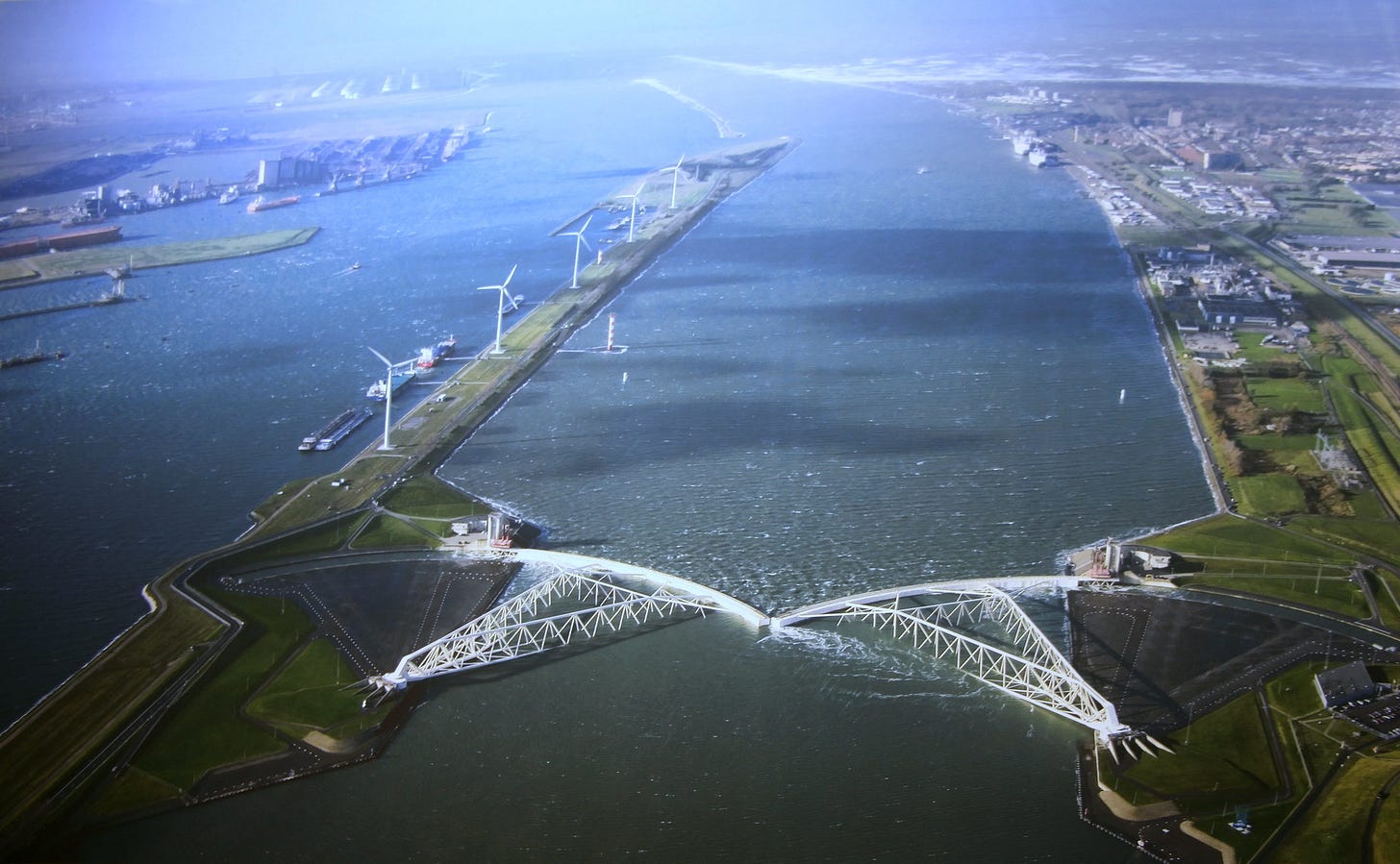
Is it risk to others? This one has some merit. A seawall in Miami doesn’t harm anyone in Mumbai. Stratospheric aerosol injection could change monsoon patterns halfway around the world—the intervention affects people who didn’t consent to it.
But what about ice sheets? Collapse of those affects everyone too. Sea level rise from Antarctic melting will reshape coastlines globally. The harm from inaction is also transboundary. So the question becomes whether there’s a meaningful difference between causing harm through action versus allowing harm through inaction. Classic trolley problem—and I don’t think climate policy is going to settle it.
Is it about intentionality? Maybe the distinction is whether you’re trying to change a planetary system versus protecting something local. But emissions reductions are intentionally changing planetary carbon cycles—we just frame it as “stopping harm” rather than “intervention.” And protecting ice sheets would protect everyone on Earth. The intent is planetary even if the action is localized. Peter Olivier wrote a good piece on this question here.
Is it reversibility? Tear down a seawall and the situation returns to baseline. Some geoengineering approaches have termination problems—stop stratospheric aerosol injection suddenly and temperatures spike. This matters for governance and deserves serious attention.
Yet plenty of adaptation isn’t reversible either. Once you’ve relocated a coastal city, that’s permanent. Once agricultural systems have shifted and communities have reorganized, you can’t easily go back. And some proposed ice sheet interventions, like thermosiphons, seem quite reversible—pull them out and you’re back to the previous state.
Is it just familiarity? Seawalls have existed for centuries. Stratospheric aerosols feel like science fiction. This is probably the most honest explanation, but it’s not a principled distinction. It’s psychological comfort masquerading as a category.
Is it about who decides? Local adaptation gets decided locally. Geoengineering affects everyone, so governance becomes contested. This is a real challenge, but it’s a governance problem rather than a definitional one. It tells us that some interventions require far more careful deliberation—not that they belong in a fundamentally different category.
None of these hold up. The line keeps moving when I push on it.
The Case That Breaks the Frame
Ice sheets are where this really broke down for me.
If you care about sea level rise—and you should, given the hundreds of millions of people living in coastal areas—then you have to care about what’s happening in Antarctica and Greenland. The ice sheets are destabilizing and we are watching it happen in real time. And once certain thresholds are crossed, the physics becomes self-reinforcing. You don’t get to undo it.
So: should we try to protect the ice sheets?
Intuitively, this feels like adaptation. We’re protecting something precious from harm. We’re not trying to redesign the climate; we’re trying to keep what we have. It’s defensive, not offensive.
Then I read Ross Andersen’s piece in The Atlantic about what ice sheet protection would actually require, and the categories stopped making sense.
Scientists have proposed using thermosiphons—long tubes that pull heat out of the ice-bedrock interface—to freeze portions of the Thwaites Glacier in place. The concept is elegant. Thermosiphons are already used in the Arctic alongside oil pipelines to prevent permafrost melt. They’re passive, powered by temperature differentials alone. No diesel, no moving parts.
The problem is getting them there.
Andersen describes what a serious mission to stabilize Thwaites might look like. A field team of around 5,000 people deployed to one of the most remote glaciers on Earth. There’s no precedent for anything like this in polar science.
You can’t fly heavy equipment onto Thwaites because its surface is riddled with crevasses. You can’t dock ships alongside it because the ice shelf towers 100 feet above the water and constantly calves building-sized chunks of ice into the bay. The only accessible route runs through the Ronne Inlet, 750 miles away.
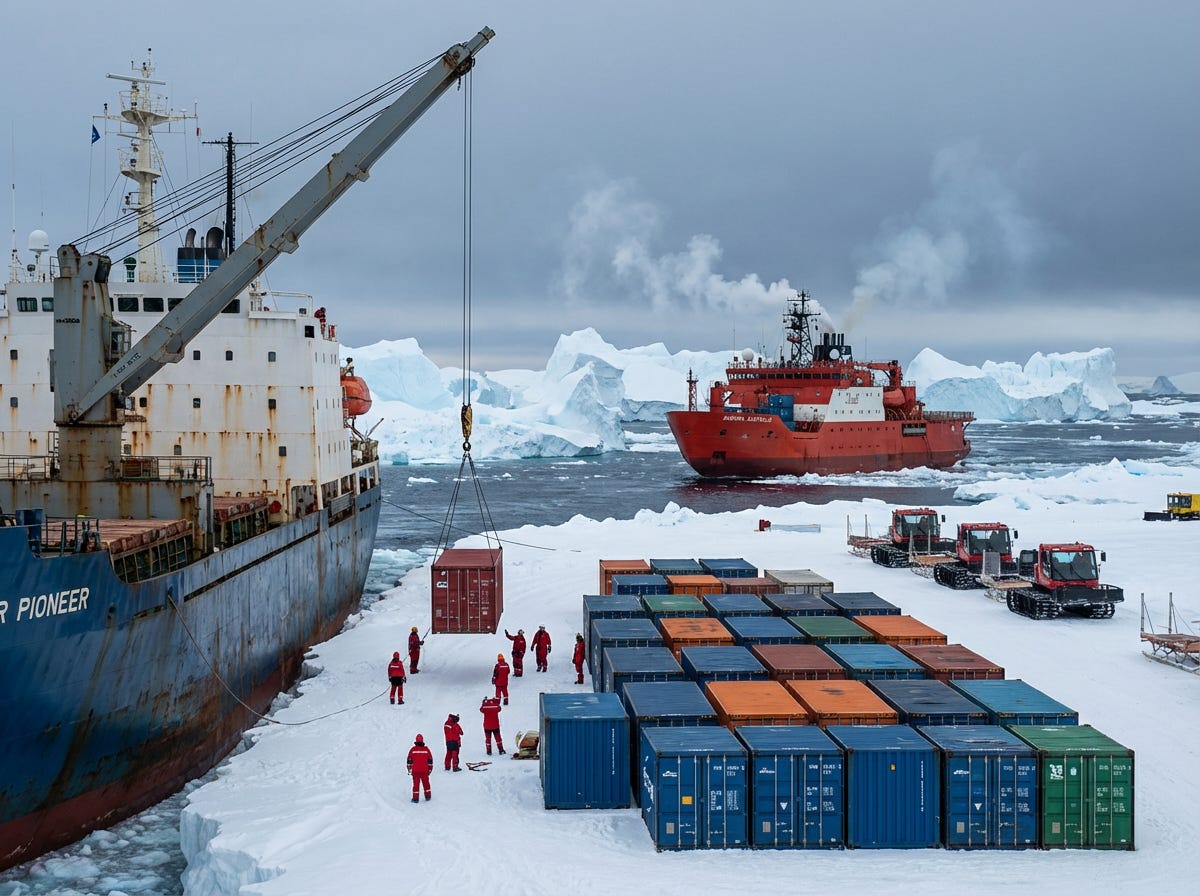
The logistics cascade from there. Ship thousands of containers of cargo from Chile. Trail an icebreaker into the inlet. Unload onto a 12-foot-high ice shelf. Tractor everything 150 miles inland to a staging ground. Then convoys traverse a high ice plateau alongside Antarctica’s tallest mountain range. Ground-penetrating radar operators scan for crevasses. When the snow is too thin to support a tractor, they blow up the crevasse with dynamite and fill it in with bulldozers.
After weeks on the ice, losing days to extreme weather, the convoy reaches the glacier’s edge and divides into smaller groups heading to 100+ separate drilling sites. That first season, nobody even unpacks a drill. They just build basic infrastructure and berms to keep winter snow from burying everything.
The drilling itself requires specialized hot-water equipment, made bespoke for polar missions. There are only about 50 such drills in the world. You’d need more than double that number. Each borehole could take days to complete, especially where the ice thickens to more than half a mile. Parts break constantly, and there are no hardware stores in Antarctica.
And we don’t even know if any of this would work. These are proposals, not proven solutions. Organizations like the Arête Glacier Initiative are doing foundational research to understand what’s actually happening beneath the ice sheets and what interventions might be feasible. We’re still in the early stages of asking the right questions. Some researchers think a checkerboard array of drilling sites could create enough “sticky spots” to slow the glacier’s flow. Others are skeptical. The subglacial environment is complex and poorly understood. We might try something and make it worse.
When I read that Atlantic piece, part of me thought: this is insane. Another part thought: this might be one of the most epic engineering challenges humans have ever attempted, and if we pulled it off, it would be genuinely heroic—a clear, measurable effort to protect hundreds of millions of people from displacement and suffering. Both reactions are probably appropriate.
The Uncomfortable Follow-On
Say we somehow pull this off. We mobilize an Apollo Program-scale effort, solve the logistics nightmares, develop the technology, and successfully install thermosiphons across Thwaites and other vulnerable glaciers.
That still doesn’t solve the underlying problem.
Thermosiphons pull heat from the ice-bedrock interface by exploiting temperature differentials. If ocean and air temperatures keep rising, you’re fighting a losing battle. You’re not preventing melting; you’re slowing it. This would merely buy more time.
Which brings me back to the same timeline problem I keep writing about: emissions aren’t declining fast enough, carbon removal isn’t scaling fast enough, and the temperature keeps rising. Even the most heroic adaptation efforts can only buy time if we’re not also addressing the underlying temperature trajectory.
The math still points toward needing to cool the planet.
The Paradigm Problem
Donella Meadows, the renowned systems thinker, wrote about leverage points—places where interventions in complex systems have the most impact. Near the bottom of her list in terms of impact are the things we usually focus on: parameters, numbers, subsidies, taxes. At the top is something more fundamental: the paradigm out of which the system arises. The basic assumptions we don’t even think to question.
I suspect the adaptation/geoengineering distinction is one of those unexamined paradigms.
The current frame says: adaptation is local and safe; geoengineering is planetary and scary. But when I try to find the principled boundary, it dissolves. What we have instead is a set of intuitions about what feels normal versus what feels hubristic. Seawalls feel normal because we’ve built them for centuries. Stratospheric aerosols feel dangerous because they’re unfamiliar (also because SAI does have inherent dangers).
These intuitions aren’t worthless—unfamiliarity often correlates with unexamined risks. But they’re not a rigorous basis for deciding which interventions deserve serious consideration.
Ice sheet protection sits right on the fault line. It feels like adaptation—we’re protecting something we value from harm. But the scale, complexity, and global implications start to look a lot like what we’d call geoengineering in other contexts.
A Different Frame
What if instead of categorical thinking we evaluated interventions based on their actual risk profiles?
Engineers do this routinely. You don’t ask “is this a safe technology or a dangerous technology?” in the abstract. You ask: what are the specific risks? How likely are they? How severe? What’s the uncertainty? And critically: what are the risks of the alternatives, including doing nothing?
This is a risk-risk framework. It acknowledges that every option has downsides, including inaction.
Take ice sheet protection as an example. The risks of attempting it include: technical failure after enormous resource investment, unintended consequences in a poorly understood system, and diverting attention and funding from other priorities. These are real and deserve serious weight.
The risks of not attempting it include: accelerating sea level rise, displacement of hundreds of millions of people from coastal areas, cascading economic disruption, and the political instability that follows when that many people lose their homes. These are also real.
You can make a similar comparison for stratospheric aerosol injection. Risks of action: altered precipitation patterns, ozone impacts, termination shock if deployment stops suddenly, governance nightmare of who controls the deployment apparatus. Risks of inaction: continued warming toward tipping points, crop failures, heat deaths, ecosystem collapse. Neither column is empty.
The point isn’t that one side always wins. The point is that you’re comparing concrete risks against concrete risks, rather than sorting interventions into “acceptable” and “forbidden” categories based on whether they pattern-match to familiar activities.
Where I’ve Landed (For Now)
I don’t have a tidy conclusion. I started this piece trying to understand a distinction that everyone seems to treat as obvious, and I ended up less sure it’s meaningful at all.
What I do believe: the current framing—adaptation acceptable, geoengineering taboo—doesn’t survive scrutiny. It’s based on intuitions about familiarity and scale that break down when you look at specific cases. Ice sheet protection is the clearest example, but probably not the only one.
I’m not arguing we should deploy stratospheric aerosols tomorrow. I’m arguing we need better frameworks for evaluating the full range of interventions available to us. Categorical taboos aren’t a substitute for rigorous risk assessment.
The climate crisis is already forcing choices we’d rather not make. We’ll make better decisions if we’re thinking clearly about what we’re actually choosing between.




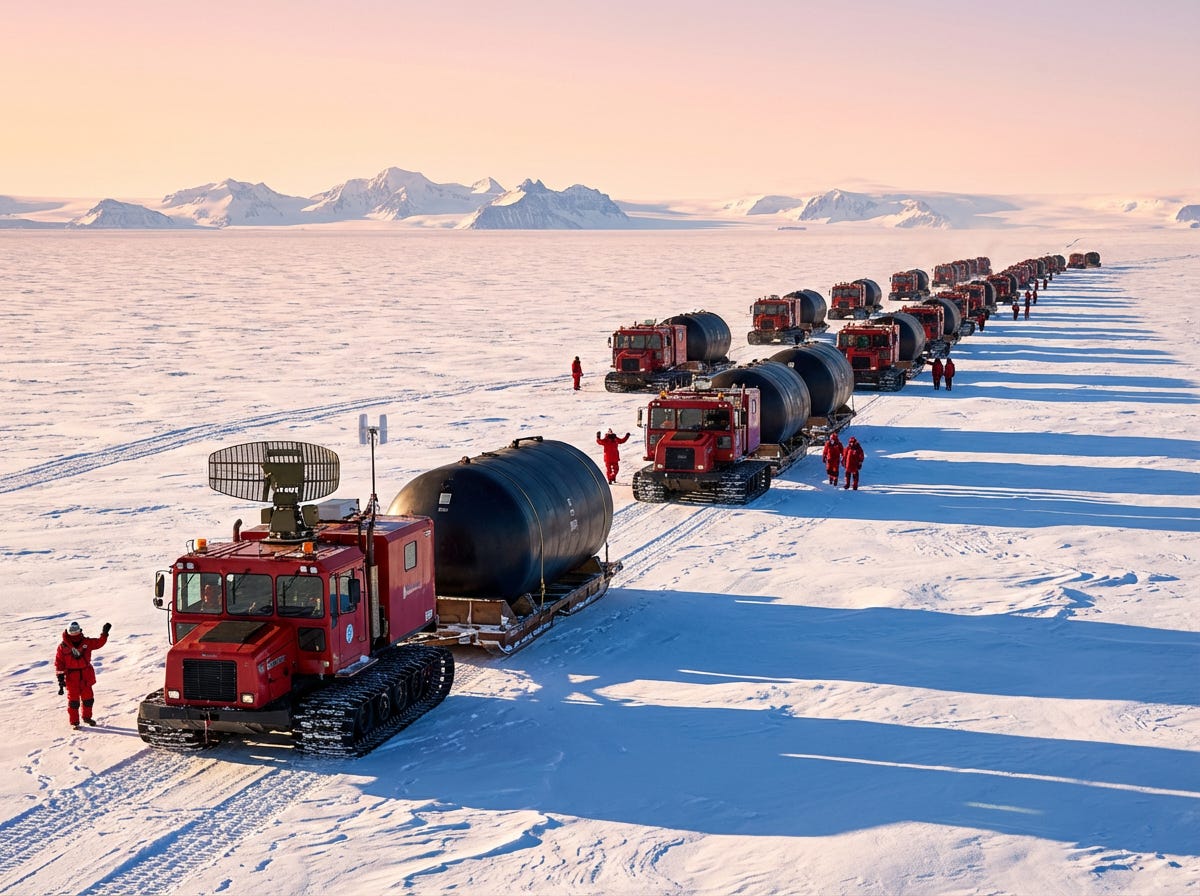
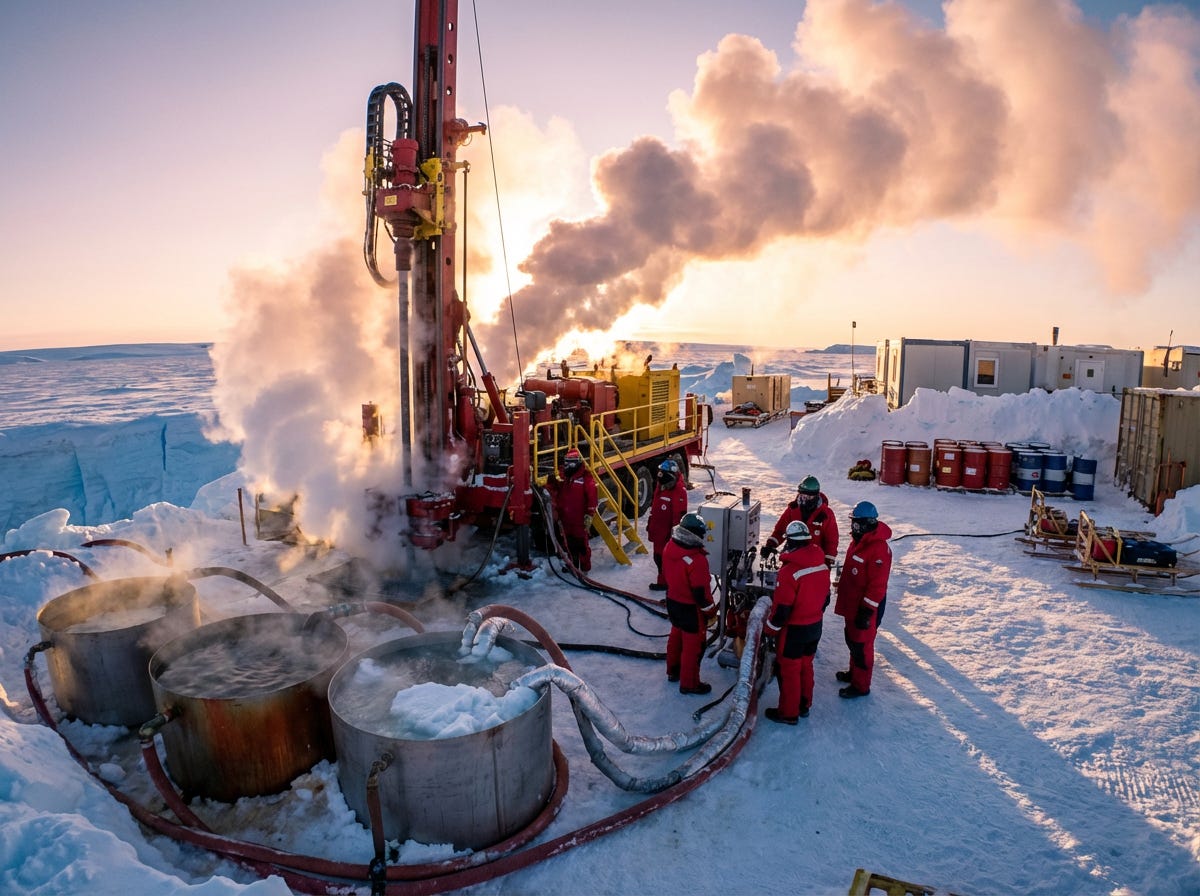
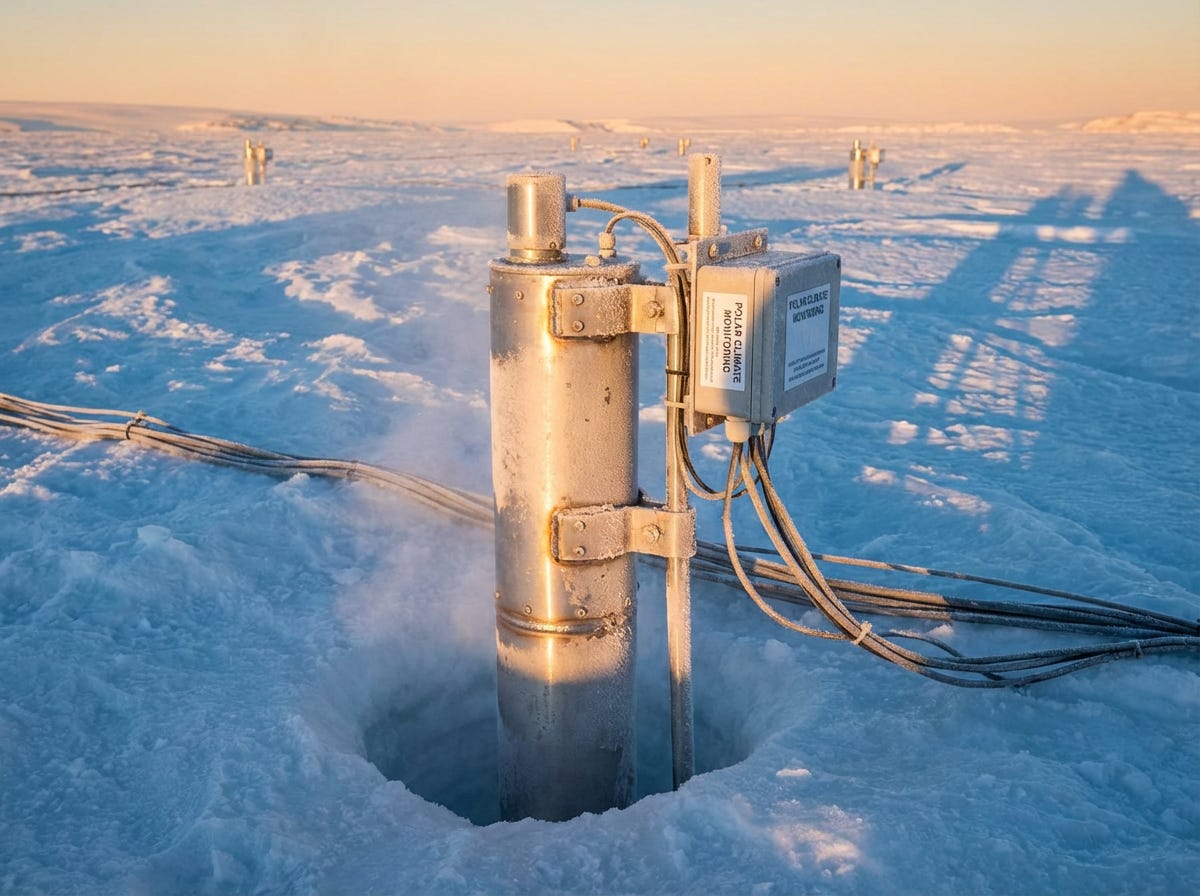
Brilliant! Thank you for this clear, concise,and detailed analysis of our adaptations to climate change past, present, and future. I especially appreciated learning about the potential consequences of many proposed efforts. My PhD dissertation in English and comparative literature was on representations of environmental time and crisis in the novel - how the complex and untimely and often invisible timescapes of pollution, evolution, generative processes, feedback loops, and geological processes are dramatized in postmodernist fiction. So I really love what you are doing!